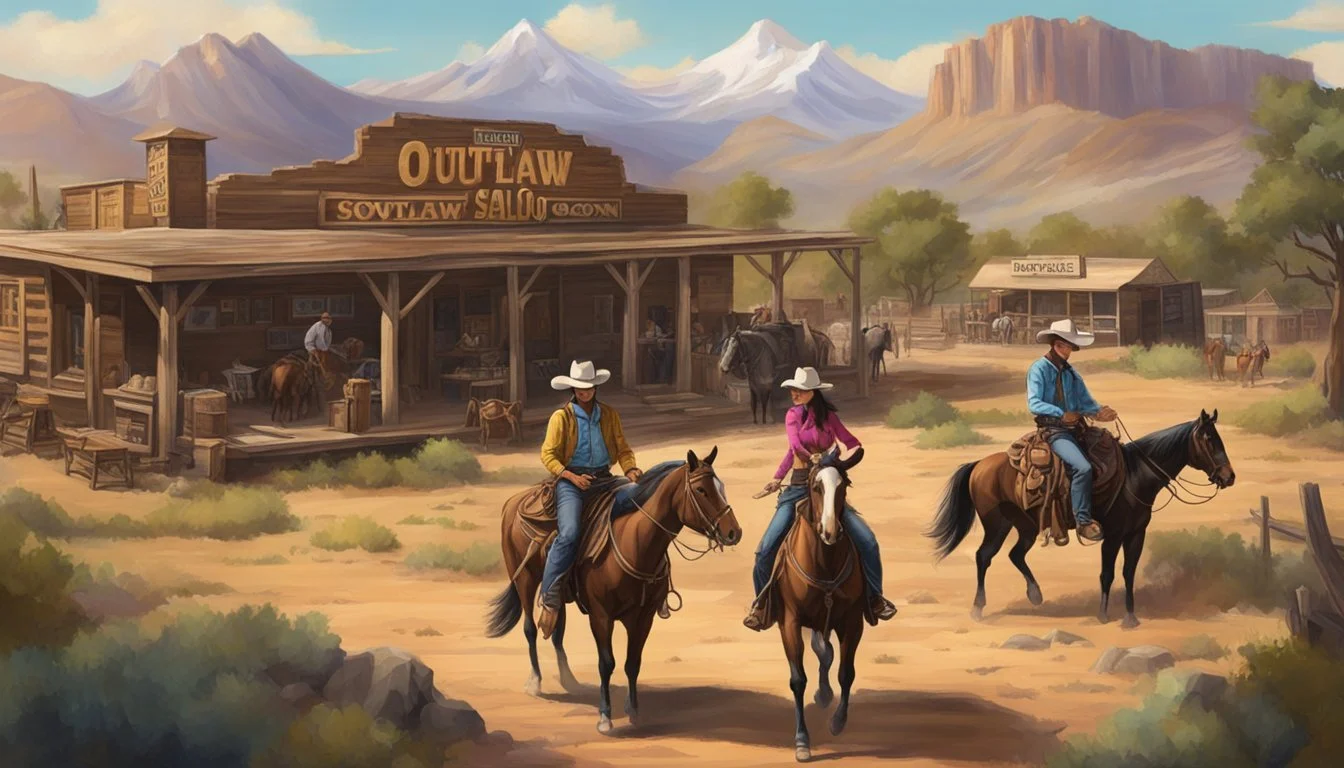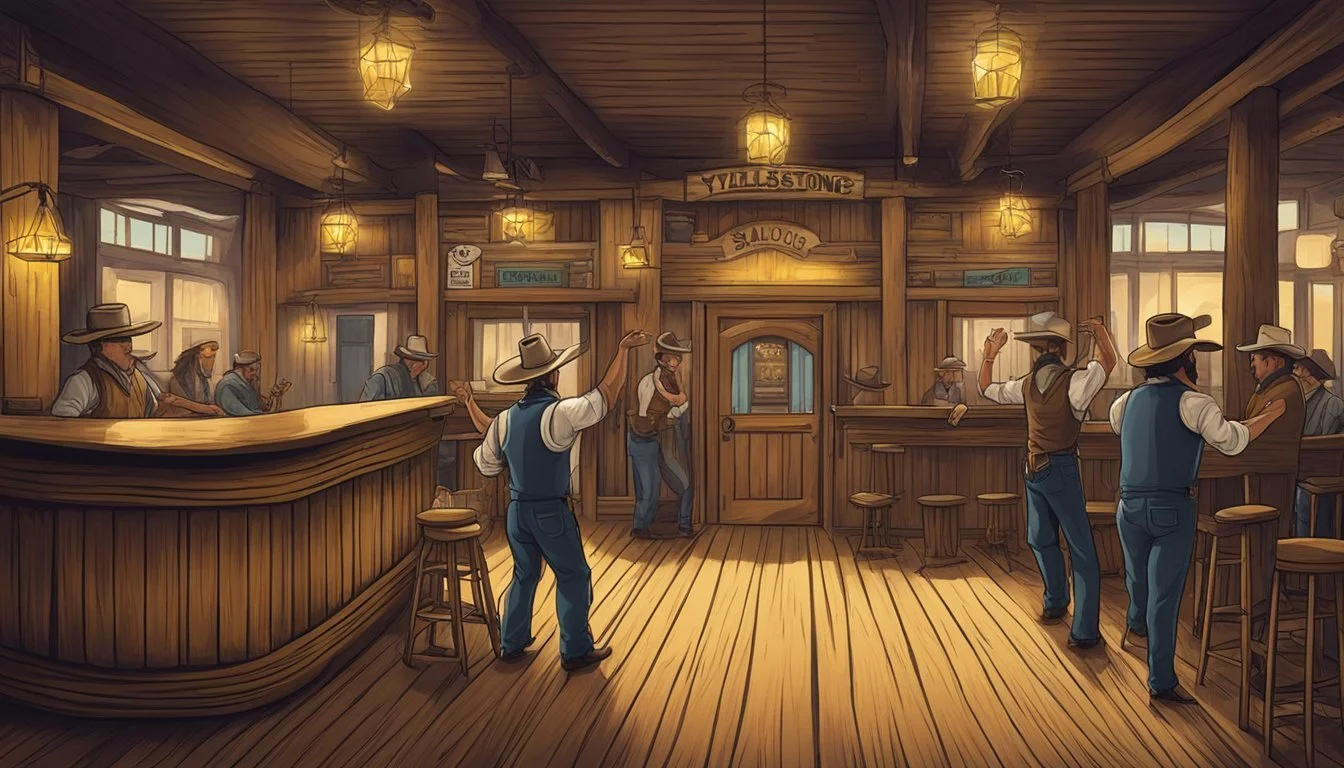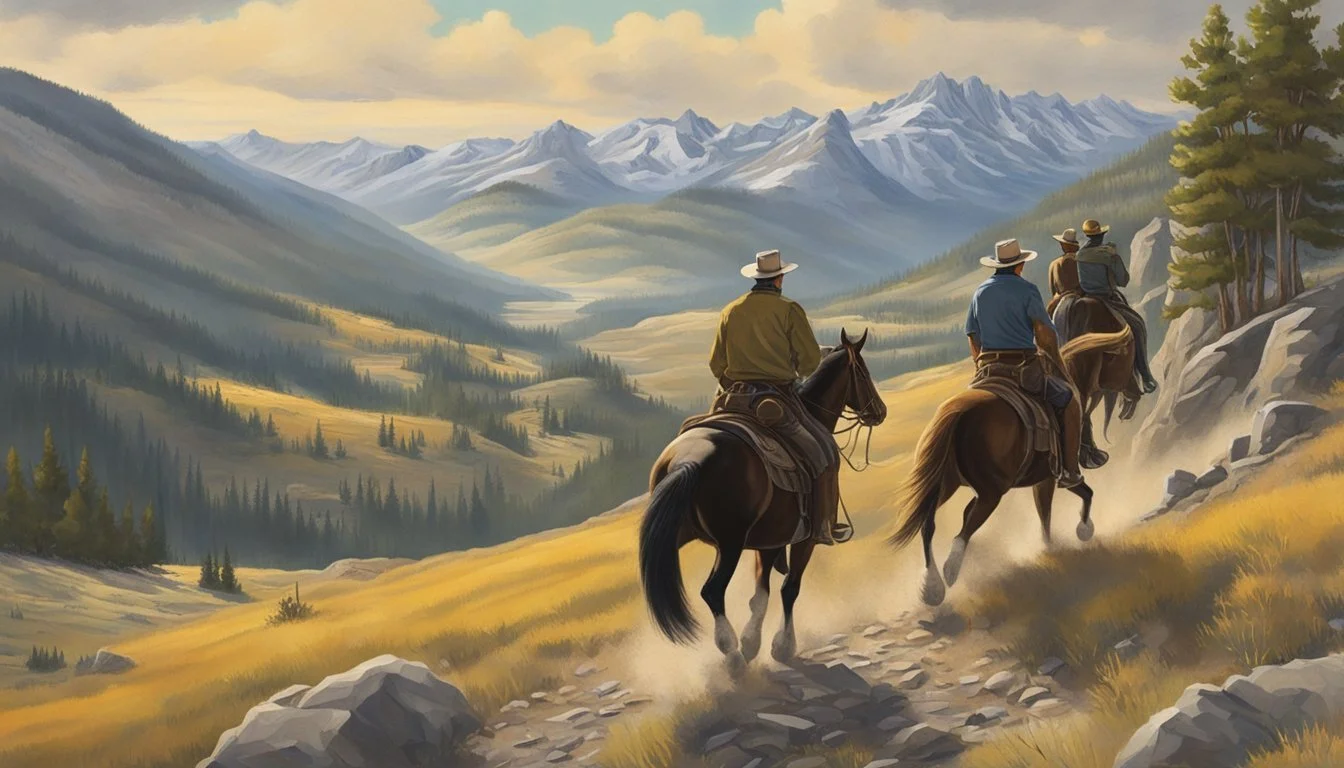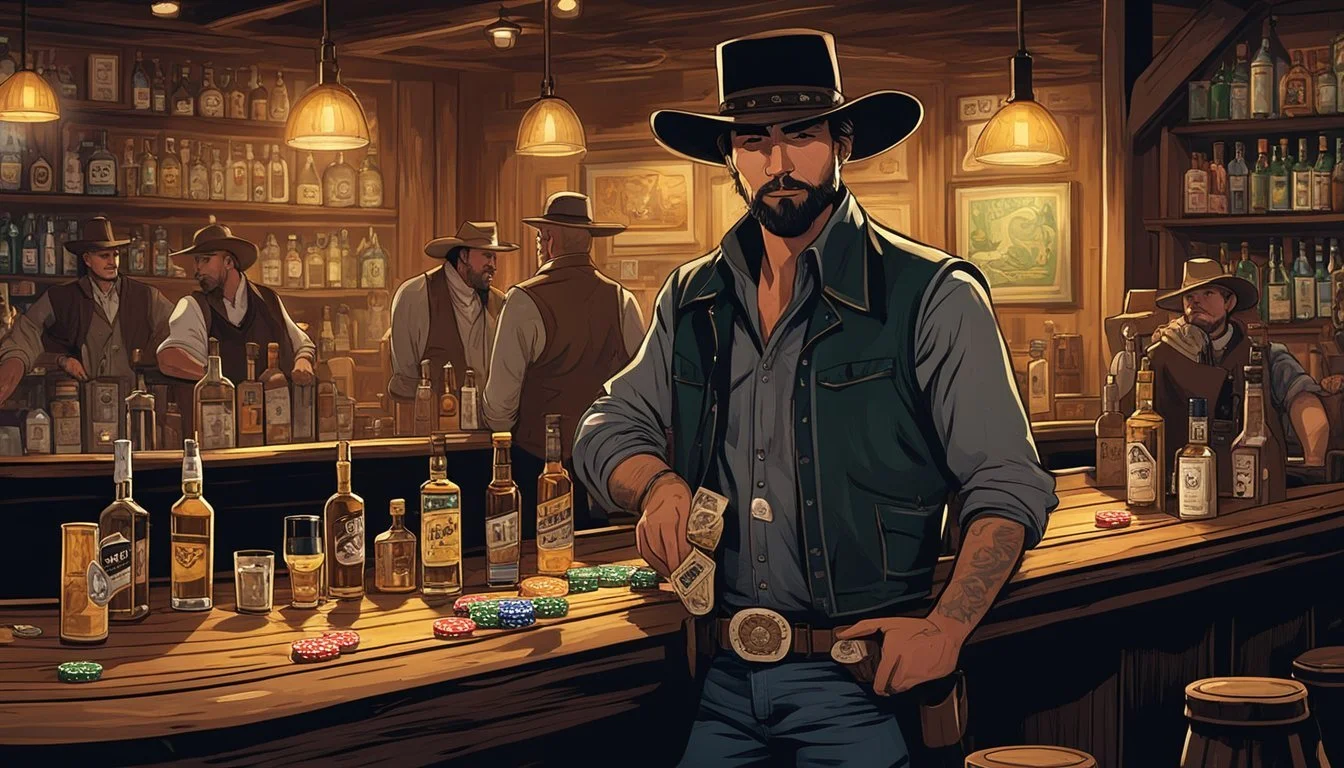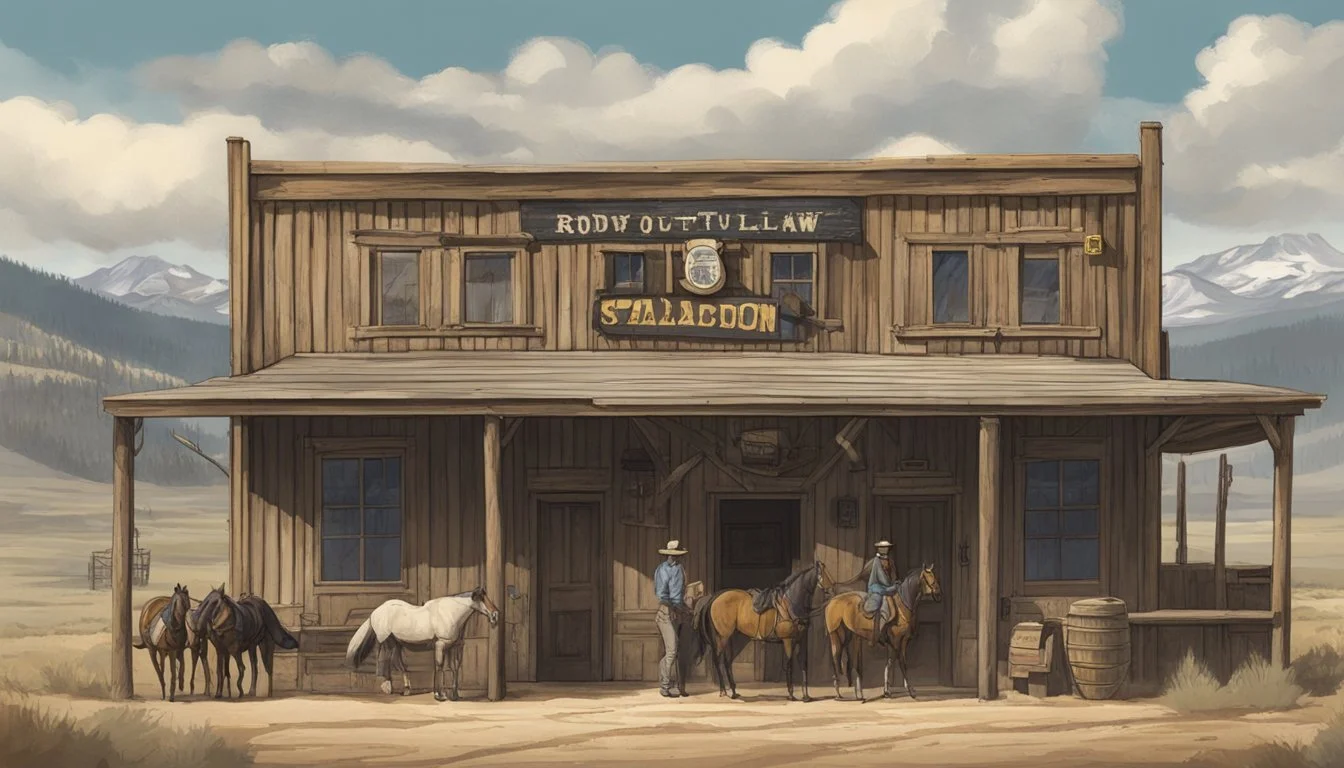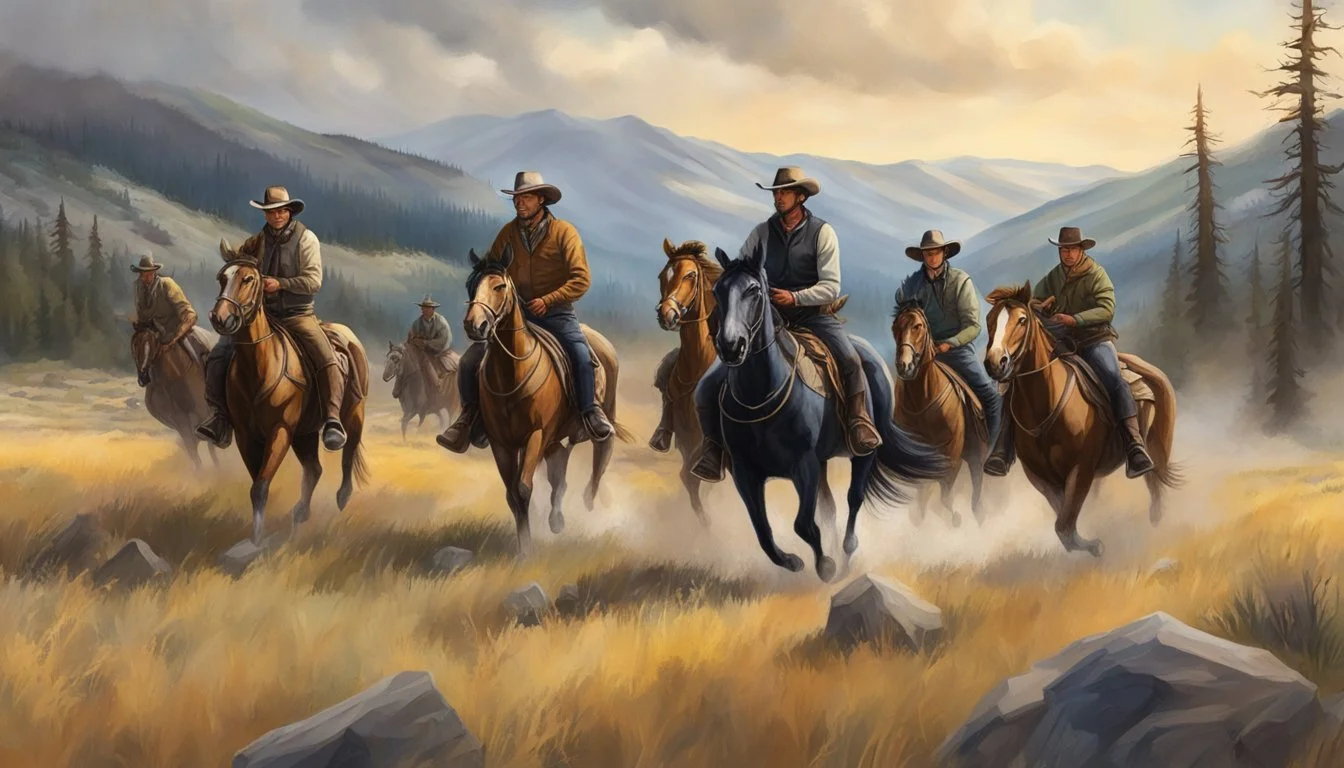Experience the Wild Side of Yellowstone at the Outlaw Saloon Today!
The Outlaw Saloon featured in the hit TV series Yellowstone has become an iconic location for fans of the show. This real-life bar in Ogden, Utah serves as a prominent backdrop for many scenes involving the Dutton family and their associates. The Outlaw Saloon captures the essence of cowboy culture and Western nightlife that permeates the Yellowstone universe.
Yellowstone, created by Taylor Sheridan for Paramount Network, follows the lives of the Dutton clan as they navigate challenges to their vast ranch. The show's creators have skillfully blended locations across Montana and Utah to bring the Dutton's world to life. While the ranch scenes are primarily filmed in Montana, urban settings like the Outlaw Saloon are often shot in Utah cities such as Ogden.
The Outlaw Saloon's authentic atmosphere and live country music make it a perfect fit for Yellowstone's gritty aesthetic. Viewers can spot characters like Beth Dutton and Rip Wheeler frequenting this establishment in various episodes. For fans looking to experience a taste of the Yellowstone lifestyle, visiting the real Outlaw Saloon offers a unique opportunity to step into the world of the show.
Series Overview
Yellowstone is a popular neo-Western drama series that has captivated audiences with its compelling story of the Dutton family and their vast cattle ranch. The show explores themes of family loyalty, power struggles, and the clash between tradition and progress in the modern American West.
Plot Summary
Set in Montana, Yellowstone follows the Dutton family, led by patriarch John Dutton (Kevin Costner). They own the largest contiguous ranch in the United States and face constant threats from land developers, a nearby Indian reservation, and America's first national park.
The series depicts the Duttons' fight to maintain control of their land and legacy. Each season introduces new challenges and adversaries, from corrupt politicians to rival ranchers and corporations seeking to exploit the area's resources.
Family dynamics play a central role, with John's children navigating complex relationships and their own ambitions while trying to protect the ranch.
Main Characters
John Dutton (Kevin Costner): The tough, determined patriarch of the Dutton family and owner of the Yellowstone ranch.
Beth Dutton (Kelly Reilly): John's fiercely intelligent and ruthless daughter, who serves as the family's business mastermind.
Kayce Dutton (Luke Grimes): John's youngest son, a former Navy SEAL torn between his family duties and his life on the nearby reservation with his Native American wife.
Jamie Dutton (Wes Bentley): The adopted son and lawyer who struggles with his place in the family and his own political ambitions.
Rip Wheeler (Cole Hauser): The loyal ranch foreman and Beth's love interest, who will do anything to protect the Duttons.
Themes and Motifs
Yellowstone explores several recurring themes:
Family legacy and loyalty
The struggle between tradition and progress
Power dynamics in rural America
Environmental conservation vs. economic development
The series uses the vast Montana landscape as a metaphor for the characters' internal struggles. It often juxtaposes the beauty of nature with the brutal realities of ranch life and political machinations.
The show also delves into issues of Native American rights, corporate greed, and the changing face of the American West, providing a nuanced look at contemporary rural life.
Creator and Production
Taylor Sheridan's vision and collaborative efforts shaped Yellowstone into a compelling Western drama. The show's development spanned several years before its premiere on Paramount Network.
Taylor Sheridan's Vision
Taylor Sheridan, a former actor turned writer-director, created Yellowstone with a clear vision for a modern Western. He aimed to explore complex themes of family, power, and land ownership in Montana. Sheridan's background in acting and his experiences growing up in Texas informed his authentic portrayal of ranch life.
His meticulous attention to visual details set Yellowstone apart. The show uses specific camera lenses and aspect ratios to achieve a cinematic feel, blurring the line between television and film.
Development Timeline
Yellowstone's journey from concept to screen took several years. Sheridan began developing the idea in the mid-2010s, drawing on his success with films like "Sicario" and "Hell or High Water."
The project gained momentum when Paramount Network (formerly Spike TV) greenlit the series in 2017. This decision aligned with the network's rebranding strategy to focus on high-quality original programming.
Production began later that year, with the first season premiering on June 20, 2018.
Collaborations and Partnerships
Sheridan co-created Yellowstone with John Linson, leveraging their combined expertise in storytelling and production. The partnership with Paramount Network proved crucial, providing the necessary resources and platform for the show's ambitious scope.
Key collaborations extended to the cast, with Kevin Costner's involvement lending star power and Western credentials. The production team worked closely with real ranchers and Native American consultants to ensure authenticity in depicting Montana ranch life and local cultures.
These partnerships contributed to Yellowstone's success, helping it become a flagship series for Paramount Network.
Setting and Filming Locations
The hit TV series Yellowstone showcases stunning landscapes and iconic Western settings. From sprawling ranch properties to rugged mountain vistas, the show's filming locations play a crucial role in bringing the world of the Dutton family to life on screen.
Montana's Landscape
Montana's breathtaking scenery serves as the primary backdrop for Yellowstone. The vast open spaces, rolling hills, and towering mountains create an authentic Western atmosphere. Key filming locations include the Bitterroot Valley, which offers picturesque views of Trapper Peak. Missoula and Hamilton also feature prominently, providing small-town charm and rustic settings for various scenes. The show's creators carefully selected these locations to capture the essence of Montana's natural beauty and rugged terrain.
Dutton Ranch
The iconic Dutton Ranch, central to the show's storyline, is actually the Chief Joseph Ranch in real life. Located near Darby, Montana, this historic property dates back to 1914-1917. The ranch's stunning log mansion and expansive grounds serve as the perfect stand-in for the fictional Yellowstone Ranch. Situated about 90 minutes south of Missoula, the Chief Joseph Ranch offers breathtaking views of the surrounding mountains and valleys, embodying the grandeur of a Western cattle empire.
Utah and Texas Locations
While Montana is the primary setting, Yellowstone also utilizes locations in Utah and Texas. Park City and Ogden, Utah, provide additional Western scenery and urban settings. The Outlaw Saloon in Ogden features in nightclub scenes, adding to the show's gritty atmosphere. Spanish Fork Fairgrounds in Utah hosts rodeo sequences. For scenes set in Texas, the production uses locations like the WestWorld of Scottsdale in Arizona to represent the fictional Ranch 6666, showcasing a different side of cowboy culture.
Authenticity in Scenery
Yellowstone's commitment to authenticity extends to its choice of filming locations. The show carefully selects real working ranches, small towns, and natural landscapes to create a genuine Western feel. This attention to detail helps immerse viewers in the world of the Duttons. From the majestic mountains of Montana to the rugged terrain of Utah and the wide-open spaces of Texas, each location adds depth and realism to the story, making the scenery as much a character in the show as the actors themselves.
Cultural and Historical Context
"Yellowstone" weaves together complex cultural threads and historical elements, creating a rich tapestry that reflects the American West. The show's portrayal of Native American tribes, its attention to historical accuracy, and its celebration of cowboy and ranching heritage all contribute to its depth and authenticity.
Portrayal of Native American Tribes
"Yellowstone" prominently features Native American characters and storylines, particularly focusing on the fictional Broken Rock Reservation. The show depicts the complex relationships between the Dutton family and neighboring tribes, often touching on land disputes and resource conflicts.
The Crow Indian Reservation, located in southern Montana, serves as inspiration for some of the show's Native American storylines. "Yellowstone" attempts to portray the challenges faced by modern Native communities, including economic hardships and the struggle to preserve cultural traditions.
Historical Accuracy
While "Yellowstone" is a fictional drama, it strives for authenticity in its depiction of ranch life and Western culture. The show incorporates historical elements that reflect the region's past, such as references to the settlement of Montana and the evolution of ranching practices.
The series touches on real-world issues affecting modern ranchers, including land development pressures and conflicts with government agencies. Organizations like the Montana Livestock Association are represented through fictional counterparts, highlighting the political and economic challenges faced by ranching communities.
Cowboy and Ranching Heritage
"Yellowstone" celebrates the enduring legacy of cowboy culture and the ranching lifestyle. The show showcases traditional ranching skills, from horseback riding to cattle branding, presenting them as essential elements of Western identity.
The Dutton family's Yellowstone Ranch serves as a symbol of the traditional ranching family, struggling to maintain their way of life in the face of modern challenges. The series also references iconic ranches like the 6666 Ranch in Texas, emphasizing the broader cultural significance of these historic properties.
"Yellowstone" depicts the complex social dynamics of ranch life, from the camaraderie among cowboys to the hierarchies within ranching communities. This portrayal resonates with viewers who value the ideals of independence and hard work associated with the American West.
Cast and Character Analysis
Yellowstone's compelling characters are brought to life by a talented ensemble cast. The actors deliver nuanced performances that capture the complexity of life on the Dutton ranch.
Leading Role Insights
Kevin Costner anchors the series as John Dutton, the patriarch fighting to preserve his family's legacy. His commanding presence and steely resolve set the tone for the show. Kelly Reilly portrays Beth Dutton with fierce intensity, bringing depth to the character's sharp wit and vulnerability.
Luke Grimes plays Kayce Dutton, the conflicted former Navy SEAL torn between family duty and his own path. Wes Bentley embodies the ambitious Jamie Dutton, whose loyalty to the family is constantly tested.
Cole Hauser's portrayal of Rip Wheeler, the loyal ranch foreman, has made the character a fan favorite. His complex relationship with Beth adds emotional weight to the series.
Supporting Cast
Gil Birmingham brings gravitas to his role as Thomas Rainwater, the Native American casino mogul and frequent Dutton adversary. Jefferson White provides comic relief as Jimmy Hurdstrom, the lovable but hapless ranch hand.
Danny Huston's recurring role as Dan Jenkins adds another layer of conflict to the Duttons' struggles. Kelsey Asbille plays Monica Long Dutton, Kayce's wife, navigating the challenges of being part of two worlds.
These supporting characters enrich the show's narrative, offering diverse perspectives on the central conflicts.
Character Evolution
Over the course of the series, the characters undergo significant changes. Beth's hard exterior softens as her relationship with Rip deepens. Kayce grapples with his identity, torn between his Dutton heritage and his wife's Native American roots.
Jamie's journey is marked by shocking revelations about his past and increasingly complex motivations. John Dutton faces health challenges and power struggles that test his iron will.
Supporting characters like Jimmy show growth, learning to find their place in the demanding world of the Yellowstone ranch. These evolving character arcs keep viewers invested in the ongoing saga of the Dutton family.
Reception and Impact
The Outlaw Saloon's appearance in Yellowstone has significantly boosted its popularity and cultural relevance. Its portrayal on the hit show has resonated with viewers and critics alike, while also influencing broader conversations about Western culture.
Audience Reception
Fans of Yellowstone have enthusiastically embraced the Outlaw Saloon as a key location in the show. Many viewers express a desire to visit the real-life establishment in Ogden, Utah. Social media posts and fan forums frequently discuss scenes set in the saloon, with particular interest in Beth Dutton's memorable moments there.
The authentic Western atmosphere of the Outlaw Saloon has struck a chord with audiences, contributing to the show's immersive quality. Viewers appreciate how the location grounds the series in a tangible, relatable setting.
Critical Acclaim
Critics have praised Yellowstone's use of real locations like the Outlaw Saloon to create an authentic Western ambiance. The saloon scenes are often highlighted in reviews as examples of the show's attention to detail and commitment to portraying a genuine modern Western environment.
Several critics have noted how the Outlaw Saloon serves as a microcosm of the larger themes in Yellowstone, representing the clash between traditional Western values and encroaching modernity. The location's inclusion has been cited as a factor in the show's success on both the Paramount Network and Paramount+.
Cultural Influence
The Outlaw Saloon's prominence in Yellowstone has sparked renewed interest in Western-themed establishments and culture. Local businesses in areas where the show films have reported increased tourism, with visitors seeking to experience the atmosphere depicted on screen.
The saloon's popularity has influenced fashion trends, with viewers emulating the style of characters like Beth Dutton in their everyday lives. This impact extends to home decor, with Western-inspired interiors gaining traction.
The success of Yellowstone and locations like the Outlaw Saloon has also led to the development of spinoff series, further expanding the show's cultural footprint and cementing the importance of authentic Western settings in contemporary television.
Related Media and Spinoffs
The Yellowstone universe has expanded beyond the original series with several spinoff shows. These prequels explore different eras of the Dutton family history and provide deeper context to the main storyline.
1883
Set in the late 19th century, 1883 follows the Dutton family's arduous journey westward. The series stars Sam Elliott, Tim McGraw, and Faith Hill. It chronicles the family's struggles as they travel from Texas to Montana, facing numerous hardships along the way.
The show delves into the origins of the Dutton ranch, showcasing the harsh realities of frontier life. 1883 received critical acclaim for its performances and stunning cinematography. It offers viewers a glimpse into the historical roots of the Dutton legacy, enriching the overall Yellowstone narrative.
1923
This spinoff takes place in the early 20th century, bridging the gap between 1883 and the main Yellowstone series. 1923 stars Harrison Ford and Helen Mirren as Jacob and Cara Dutton. The show explores the challenges faced by the Dutton family during the aftermath of World War I and the beginning of Prohibition.
1923 has been renewed for a second season, indicating its popularity among viewers. It provides crucial backstory to the Dutton family's rise to power in Montana. The series tackles themes of economic hardship, changing social norms, and the evolving American West.
Unique Aspects of the Show
Yellowstone stands out for its authentic portrayal of modern Western life. The show's attention to detail in music, visuals, costumes, and action sequences creates an immersive viewing experience.
Music and Soundtrack
The Yellowstone soundtrack features a mix of country, folk, and rock music that enhances the show's Western atmosphere. Original compositions blend seamlessly with licensed tracks from artists like Whiskey Myers and Chris Stapleton.
Key musical moments often underscore emotional scenes or accompany montages of ranch life. The theme song, composed by Brian Tyler, sets a dramatic tone with its sweeping orchestral arrangement.
Live music performances at the fictional Outlaw Saloon add authenticity to bar scenes. These musical interludes showcase real country artists and contribute to the show's gritty ambiance.
Cinematography
Yellowstone's cinematography captures the rugged beauty of Montana's landscapes. Sweeping aerial shots showcase vast mountain ranges, pristine forests, and sprawling ranchlands.
The camera work emphasizes the grandeur of the Dutton ranch, contrasting it with more intimate shots of character interactions. Low-angle shots often frame characters against big skies, emphasizing their connection to the land.
Lighting plays a crucial role, with golden hour scenes and moody interiors adding visual depth. The show's color palette favors earthy tones that reflect the natural surroundings.
Costuming and Authenticity
Yellowstone's costumes strike a balance between contemporary Western wear and traditional cowboy attire. Characters sport a mix of practical ranch clothing and more stylized outfits for social occasions.
Attention to detail is evident in the worn-in boots, weathered hats, and authentic gear used by the ranch hands. Beth Dutton's wardrobe showcases a blend of Western and urban styles, reflecting her character's complexity.
The show's commitment to authenticity extends to the tack and equipment used in riding scenes. Saddles, bridles, and other horse gear are period-appropriate and well-maintained.
Stuntwork and Action Scenes
Yellowstone features high-quality stuntwork in its rodeo and ranching scenes. Professional riders perform dangerous stunts like bull riding and bronc busting, adding realism to the show's portrayal of rodeo culture.
Horseback riding sequences showcase skilled equestrians navigating challenging terrain. These scenes often involve complex choreography with multiple riders and cattle.
Fight scenes blend modern and old-West styles, incorporating both hand-to-hand combat and gunplay. The show's action sequences are typically raw and intense, reflecting the harsh realities of ranch life and the conflicts surrounding the Dutton family.

